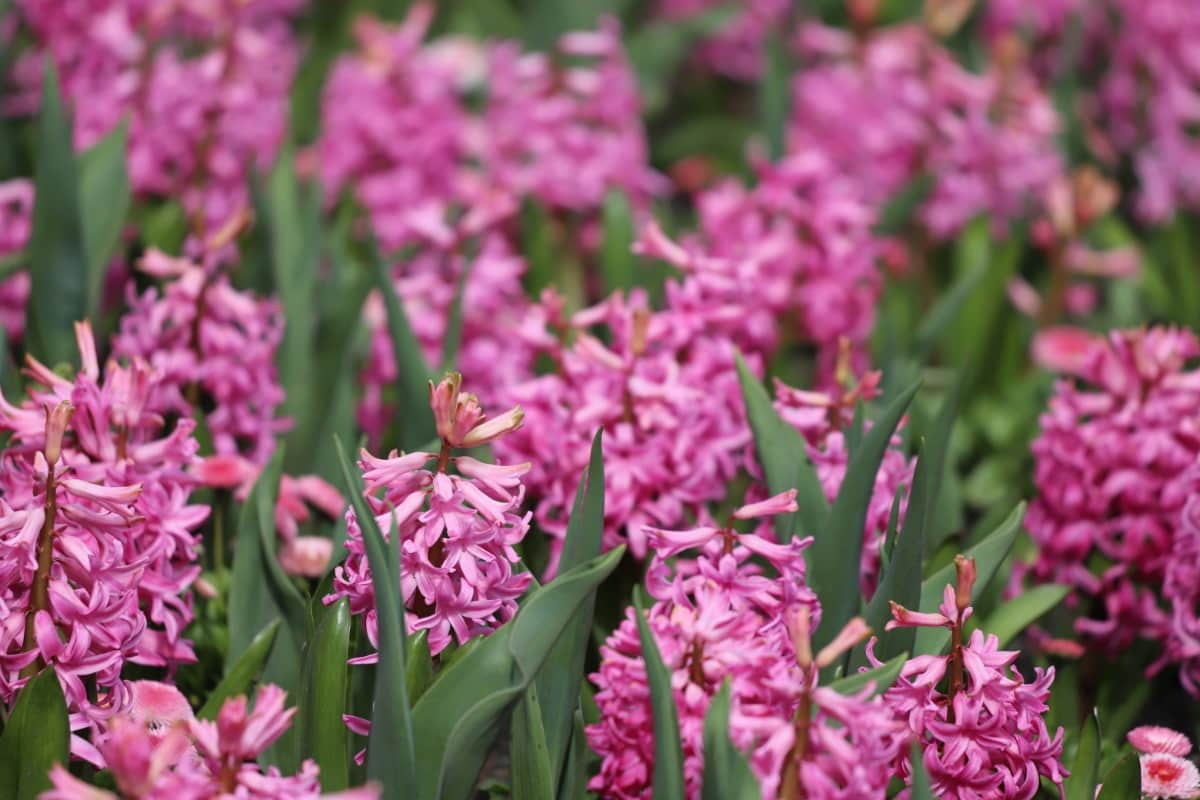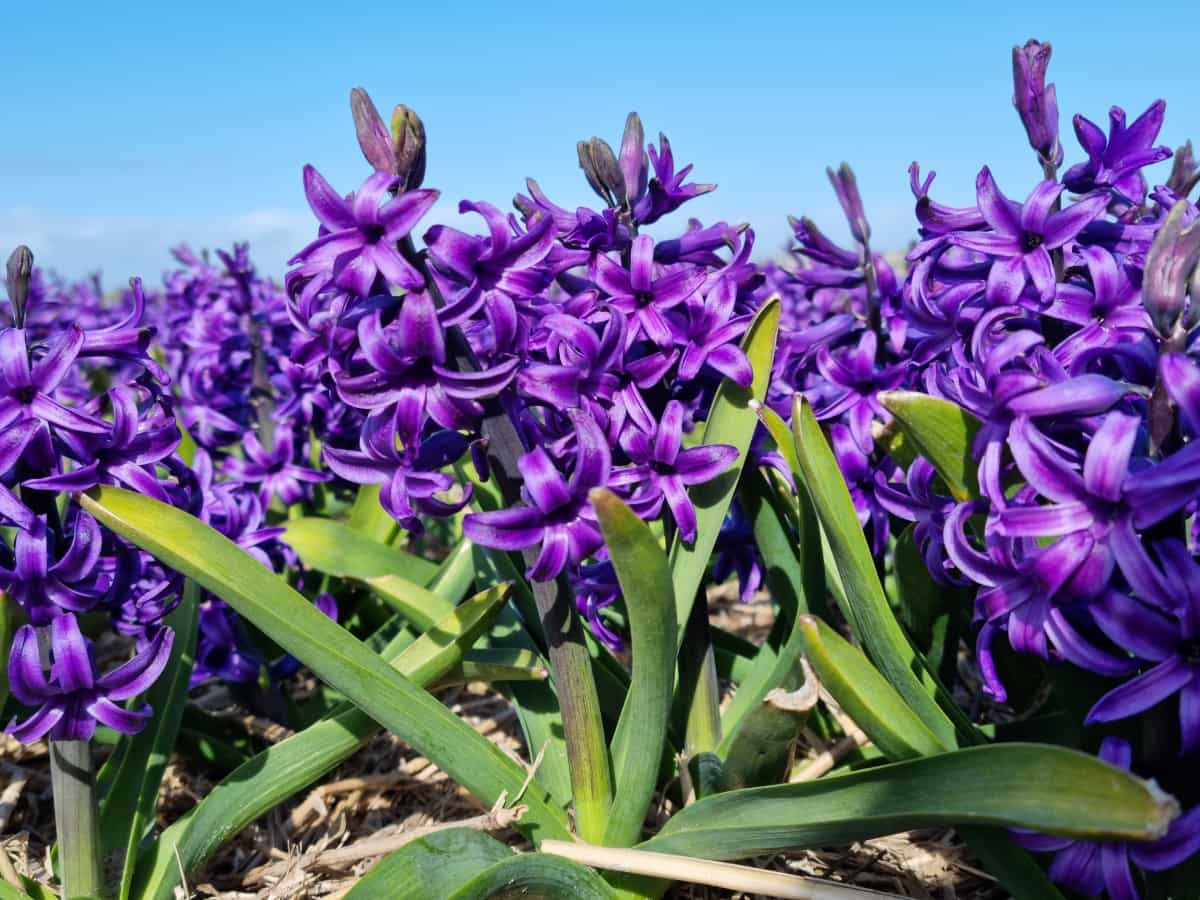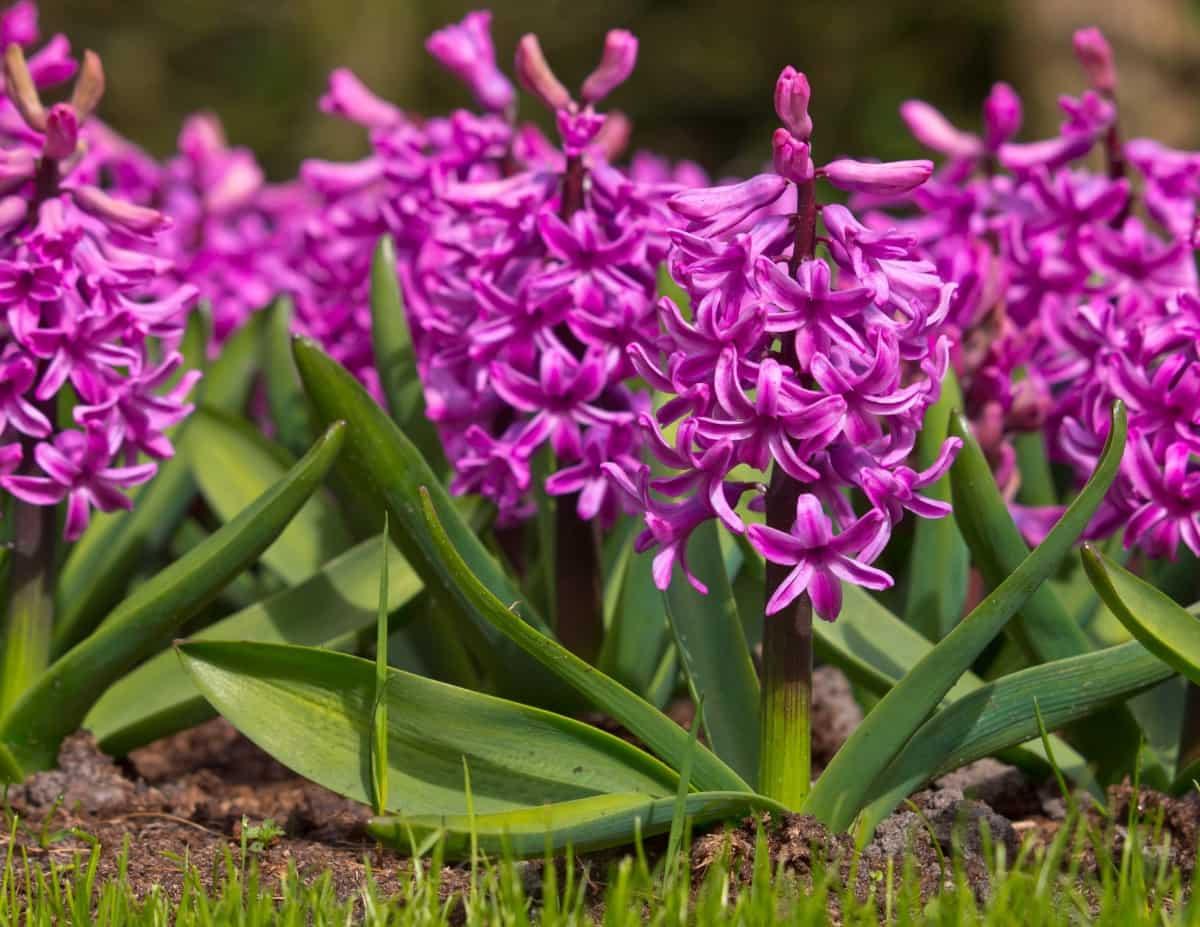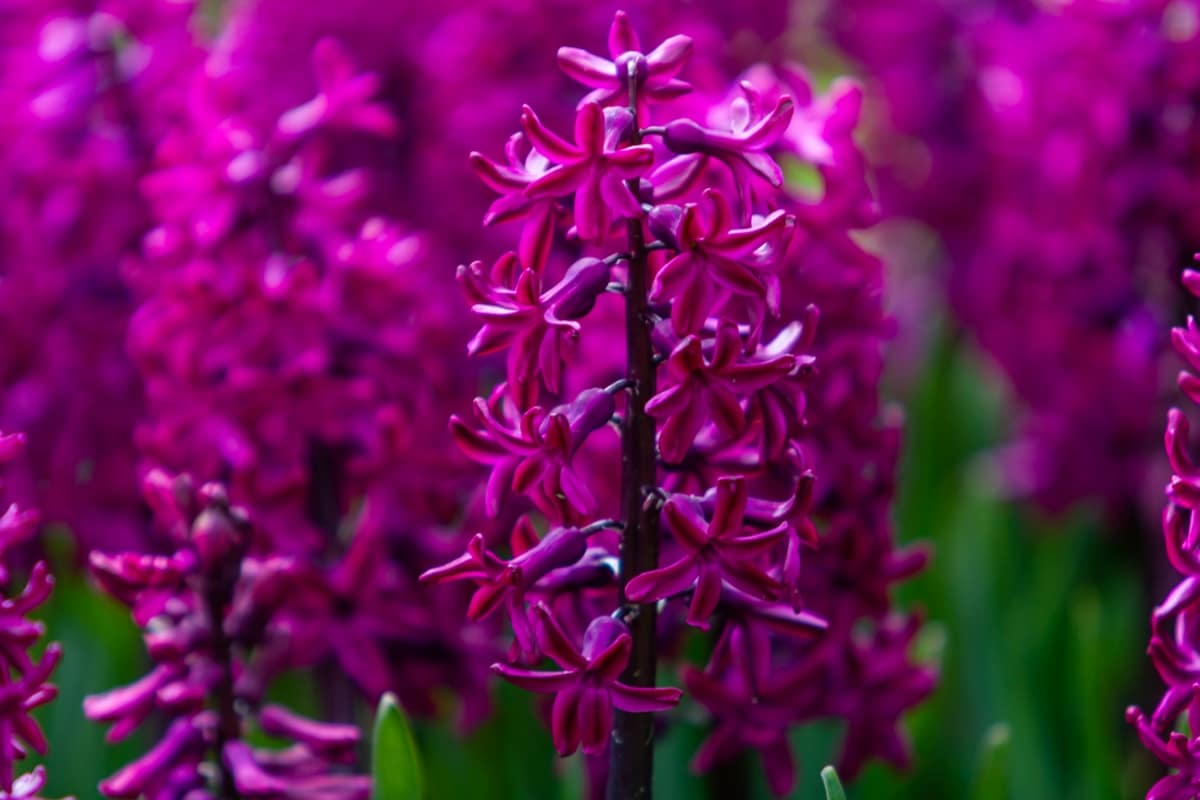Hyacinths, with their vibrant colors and sweet fragrance, are a beloved addition to many gardens. However, these beautiful flowers can prey on various pests, threatening their health and beauty. This article will discuss effective natural and organic techniques for controlling hyacinth pests while taking the ecosystem’s overall health into account. Understanding these strategies is crucial to maintaining a flourishing garden.

How to Control Hyacinth Pests Naturally
What is a Hyacinth?
Hyacinths are bulbous herbs native to the Mediterranean and tropical Africa, derived from Hyacinthus orientalis. They have four to six narrow untoothed leaves emerging from the underground bulb. The inedible bulbs contain oxalic acid, which can cause skin irritation. The fragrant flowers are usually blue but can be pink, white, or other colors. They are borne in a raceme cluster at the top of the stems, with each stalk having a small bract below. Ornamental cultivars are often densely arranged, while wild species may have two or three flowers in an inflorescence.
Understanding Hyacinth Pests: Identifying Common Pests and Their Damage
- Aphids: These small, soft-bodied insects can cluster on hyacinths, sucking sap and causing deformities in leaves and flowers.
- Snails and Slugs: These slimy creatures can munch on hyacinth leaves and flowers, leaving behind unsightly holes.
- Spider Mites: Tiny arachnids barely visible to the naked eye feed on hyacinth sap, leading to a stippled appearance and weakened plants.
Prevention is Key: Implementing Effective Strategies to Control Hyacinth Pests
- Good Garden Hygiene: Regularly remove debris, dead plant matter, and fallen leaves from your garden. These can provide hiding spots for pests.
- Inspect Regularly: Conduct routine inspections of your hyacinths. Early detection of problems allows for quicker and more effective intervention.
- Prune and Thin: Maintain proper spacing between your hyacinths to promote good airflow, which can deter pests. Prune back overgrown vegetation to prevent hiding places for pests.
Natural Remedies for Hyacinth Pest Control: Harnessing the Power of Companion Planting
- Marigolds: Their strong scent can deter aphids, nematodes, and other pests.
- Chives: The aromatic properties of chives can keep aphids and Japanese beetles at bay.
- Garlic: Garlic’s strong smell keeps various problems away, such as spider mites and aphids.
Organic Treatments for Hyacinth Pests: Utilizing Safe and Environmentally Friendly Solutions
- Neem Oil: This natural oil is a versatile pest control remedy. Neem oil suffocates aphids and disrupts their life cycle. It’s safe for plants and beneficial insects.
- Diatomaceous Earth: Made from crushed fossils, diatomaceous earth is a powdered substance that effectively controls spider mites by dehydrating them. It’s non-toxic to humans, pets, and beneficial insects.
- Homemade Garlic Spray: Mixing crushed garlic with water and soap can create an effective repellent for various pests. Spray it on your hyacinths to deter unwanted visitors.
In case you missed it: How to Control Anemone Pests Naturally: How to Get Rid of Them with Natural and Organic Treatment

Creating a Healthy Garden Ecosystem: Attracting Beneficial Insects to Combat Hyacinth Pests
- Ladybugs: Ladybugs are voracious aphid predators. Attract them by planting nectar-rich flowers like dill, fennel, or yarrow.
- Lacewings: Lacewings feed on aphids, mealybugs, and tiny caterpillars. They can be drawn to your garden by providing diverse plant species.
- Parasitic Wasps: The eggs of these tiny wasps are laid on pests, effectively reducing their populations. Plant nectar-rich flowers like dill, parsley, and fennel to attract them.
Homemade Pest Repellents: DIY Recipes to Deter Hyacinth Pests Naturally
- Garlic Spray: Several crushed garlic cloves should be combined with water and liquid soap to make a garlic spray. Let the mixture sit for a few hours, strain it, and spray it on your hyacinths. The pungent garlic odor will deter many pests.
- Soap and Water Spray: A simple mixture of mild soap (like castile soap) and water can effectively control aphids. Spray the soapy water directly on the pests, which will disrupt their cell membranes and eventually kill them.
Physical Barriers and Traps: Physical Methods to Keep Hyacinth Pests at Bay
- Copper Tape: Surrounding your flower beds with copper tape creates a barrier that snails and slugs won’t cross. The copper gives them a small electric shock when they touch it, encouraging them to stay away from your hyacinths.
- Beer Traps: Sink shallow beer containers into the ground near your hyacinths. Slugs and snails, which get attracted to beer, fall in and drown.
Soil Management Techniques: Enhancing Soil Health to Reduce Hyacinth Pest Infestations
- Amending with Organic Matter: Regularly enrich your soil with organic matter like compost. This improves soil structure, water retention, and nutrient availability to your plants.
- Crop Rotation: Rotate your hyacinths to different areas of your garden each year to disrupt the life cycles of soil-borne pests.
By focusing on soil health, you can create an environment where hyacinths are less susceptible to infestations.
Proper Watering and Fertilization Practices: Maintaining Vigorous Hyacinths to Resist Pests
- Proper Watering: Overwatering can create conditions that attract pests. Ensure that your hyacinths receive adequate but not excessive moisture. Water at the base of the plants to keep foliage dry.
- Balanced Fertilization: Avoid over-fertilizing, as excessive nutrients can make your hyacinths more attractive to pests. Follow recommended fertilization practices based on your soil’s needs.
In case you missed it: How to Control Violet Pests Naturally: How to Get Rid of Them with Natural and Organic Treatment

Integrated Pest Management (IPM) for Hyacinths: A Holistic Approach to Pest Control
- Monitoring Pest Populations: Regularly check your hyacinths for signs of pest infestations. Establish thresholds to determine when action is needed.
- Identifying Beneficial Insects: Encourage the presence of beneficial insects that naturally control pests in your garden.
- Implementing Treatments Selectively: Apply neem oil, diatomaceous earth, or homemade repellents only when pest populations exceed established thresholds.
Hyacinth Pest Control with Natural and Organic Treatment
| Pest | Description |
| Aphids | Neem oil is a natural pesticide that suffocates aphids and disrupts their life cycle. Safe for plants and beneficial insects. |
| Snails and Slugs | Copper tape creates a barrier around flower beds, giving snails and slugs a mild electric shock that deters them from crossing. |
| Spider Mites | Diatomaceous earth is a powdered substance that dehydrates spider mites, making it an effective and non-toxic pest control option. |
| Various Pests | Marigolds emit a strong scent that repels aphids and nematodes, making them a great companion plant for hyacinths. |
| Beneficial Insects | Attract beneficial insects like ladybugs, lacewings, and parasitic wasps by planting nectar-rich flowers and diverse plant species. |
| Soil Health | Regularly enrich your soil with organic matter like compost to improve soil structure, water retention, and nutrient availability. |
| Vigorous Hyacinths | Avoid overwatering, as excessive moisture can attract pests. Water at the base of the plants to keep foliage dry. |
Frequently Asked Questions (FAQs) on Controlling Hyacinth Pests Naturally
Are Chemical Pesticides Safe for Hyacinths?
Chemical pesticides can harm the environment and your hyacinths, so it’s best to explore natural and organic options that are safer for your garden.
How Can I Protect My Hyacinths from Slugs and Snail Damage?
Use physical barriers like copper tape and beer traps, and make your garden less attractive to them by keeping it clean and dry.
Will Companion Planting Affect the Growth of My Hyacinths?
No, companion plants like marigolds, chives, and garlic can benefit your hyacinths by deterring pests without hindering their growth.
In case you missed it: How to Control Carambola Pests Naturally: How to Get Rid of Them with Natural and Organic Treatment

Conclusion
Controlling hyacinth pests through natural and organic methods not only safeguards your garden but also contributes to a healthier environment. By understanding the Pests, preventing infestations, and using eco-friendly treatments, you can ensure your hyacinths thrive while maintaining a balanced ecosystem. Embracing sustainable gardening practices is the key to protecting your beautiful hyacinths and the broader environment. Remember, a healthy garden is not just about the plants you grow; it’s about the entire ecosystem you nurture.
- Beneficial Insects in Pest Management
- Natural Solutions for Pest Control in Flower Gardens
- Types of Fungicides Used in Agriculture
- Common Issues in the Fruit Development Stage of Pomegranate Farming
- Fruit Development Issues in Papaya: Easy Solutions and Treatment
- Soil-Borne Diseases and How to Protect Your Plants
- Practices to Prevent Disease Spread in the Garden
- From Wilted to Thriving: How to Treat Root Rot Naturally in Houseplants
- Natural Remedies to Cure Brown Spots on Fig Tree Leaves